Back pain, especially lower back pain, is on the rise among young adults and adolescents. This is attributed to our bad sitting postures and the new norm of prolonged sitting and sedentary lifestyles. It is thus not surprising that low back pain should be the leading cause of disability.  In fact, it is so common worldwide that it is the commonest reason people seek medical consultations.
In fact, it is so common worldwide that it is the commonest reason people seek medical consultations.
Pain is an indicator that something is not right; often the last to show up and the first to leave.
People are suffering. The disabling nature of back pain negatively interferes with their quality of life and work performance.
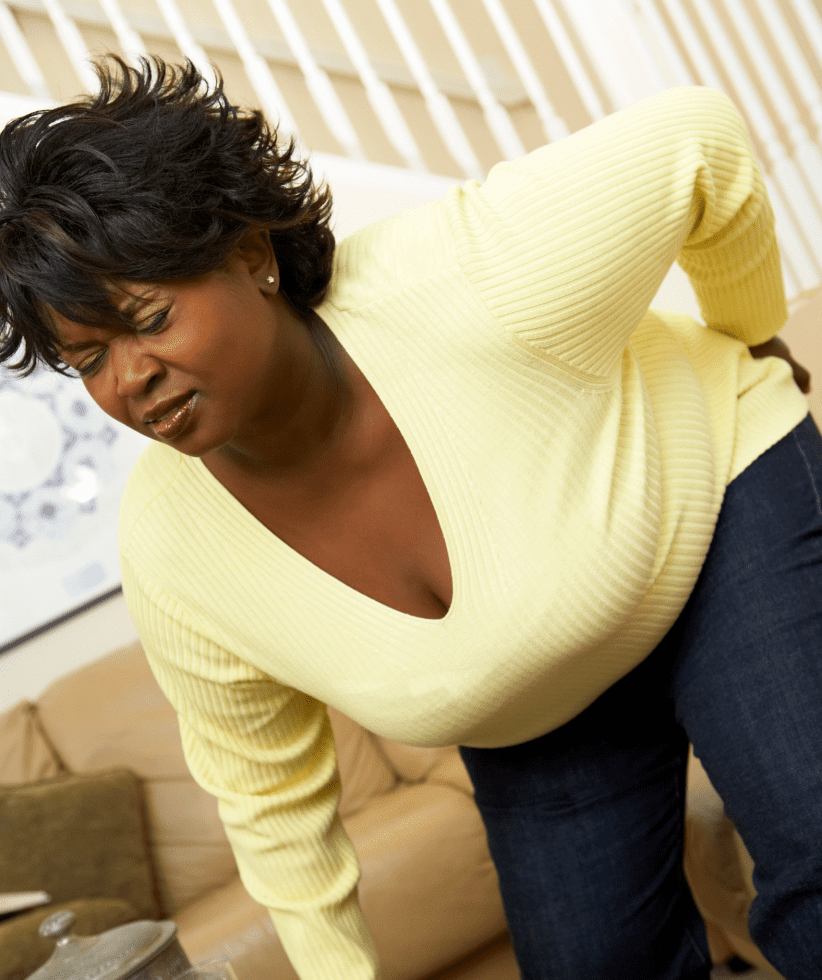
BUT… what if i told you there are known ways to help you or a loved one manage the pain and live a more functional lifestyle, free of pain? One you could do at home at your convenience? Without the use of medication or surgery? Yes, it is indeed possible. You only need to determine which disability scale you fall into and then use the tips to help achieve just that. You can start here by taking this TEST.
*The following advice has been pivotal in the care of many clients at Oak Wellness hub with spinal issues. I’m sharing freely in this blog post but should you needed guided counsel, do contact us for expert care.*
Interestingly, we often think that resting and restraining from activities such as exercising will help ease the pain. However, it’s rather the opposite that helps. Most doctors advice that you get active and keep the spine and related muscles moving as a better pain relief method.
With that said, if you took the test and eager to know the meaning of its outcome and its solutions: KEEP READING.
Table of Contents
0-20%: Minimal Disability
If your score is in this range, you are either pain free or experience very mild pain occasionally. Fortunately,it is quite easy to rid yourself of this kind of nagging pain and disability. Remember, the goal here is to get you 100% functional.
Go through the tabs and learn more on how achieve this goal.
 Sit upright as often as you can
Sit upright as often as you can- Do not slouch or recline for long periods of time
- Do not sit for more than 30 minutes at a stretch
- Preferably, use an ergonomic lumbar support such as the Oak rest to cushion your back.
SLEEP RIGHT.
- The best sleeping postures are on your back and sides.
- Tummy sleeping is a NO NO. It puts a strain on the lower back leading to nerve impingement. Desist from doing so.
- Additionally get 6-8 hours of sleep daily.
- A firm bed such as an orthopedic mattress usually helps support the spine and give a good night rest.
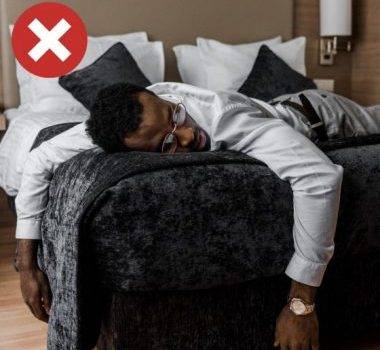


 Eat right to help your muscles, nerves and spine bones get the right nutrients to nourish your body so you heal faster and function better.
Eat right to help your muscles, nerves and spine bones get the right nutrients to nourish your body so you heal faster and function better.
- Make your plate colorful. Eat a balanced diet.
- plan your meals and eat at regular times
- Of course DO NOT FORGET TO HYDRATE.
- And get a lot of sunshine to strengthen the bones
Move right with daily exercises that get you sweating. 
Walking, aerobics, stretching and fitness programs are great ways to keep you active and functioning optimally.
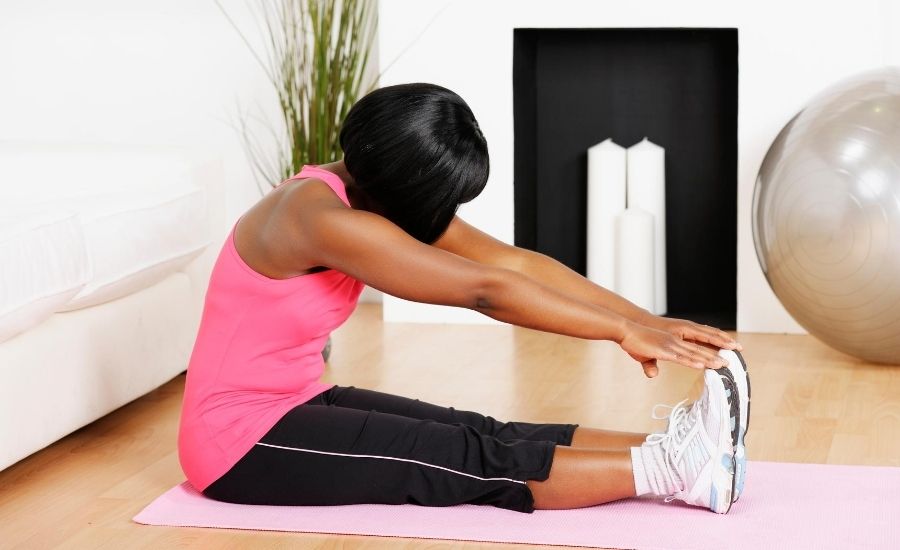







LUMBAR STRETCHES
21-40%: Moderate Disability
Pain causing moderate disability is usually nagging and very annoying. It may not adversely interfere with your daily activities such as personal care or sexual activity but it can significantly interfere with travel and your social life. Most people who fall in this category just get used to it and adapt to the pain. Its effects, ready to rear its ugly head in the future.
The deceptive aspect of this phenomenon however is, when the symptoms flare up and then wane as the pain seemingly subsides but does not vanish .
If you find yourself in this range, DON’T NURSE the pain. GET FUNCTIONAL. These exercises will greatly help in addition to tips under the mild disability category.
*Caution: Its normal to experience soreness or some pain a few hours after exercising or the next day. STOP if an exercise aggravates the pain immediately.
 Move right – Exercise at least 3x a week
Move right – Exercise at least 3x a week- Eat a balanced meal daily – rich in veggies and fruits.
- Hydrate– Drink at least 2L of water daily. Not more than 300 mls at a go.
- Sleep – 6- 8 hours daily. Avoid tummy sleeping.
- Do not sit for more than 30 minutes at a stretch.
Stretch, Get flexible, Strengthen your back with these exercises.











HOLD POSITION for 10-20s
REPEAT 3X
LUMBAR EXTENSION
-Start from a resting position
(keep your hip region on the floor)
-Gently raise upper body up
– Until arms are fully extended
-HOLD THIS POSITION FOR 10-20S
-REPEAT 3 X
LUMBAR EXTENSION
HOLD POSTION FOR 15-30s
REPEAT 3X
-Start from a resting position
(keep your hips on the floor)
-Gently raise upper body
– Until arms are fully extended
-HOLD POSITION for 15-30s
-REPEAT 3 X
KEEP KNEE STRAIGHT
RAISE LEG
HOLD POSITION for 20-30s
REPEAT ON BOTH LEGS 4X
– Lie on your back
– Thread a towel or resistant band under one foot
– Keep your knee straight
– Pull on the resistant band while raising the leg
-HOLD POSITION for 20 -30s
– Repeat on both legs 4 x
KEEP KNEE STRAIGHT
RAISE LEG
HOLD POSITION for 20-30s
REPEAT ON BOTH LEGS 4X
– Lie on your back
– Thread a towel or resistant band under one foot
– Keep your knee straigth
– Pull on the resistant band while raising the leg
-HOLD POSITION for
Go for walks at least 30 mins, 3x a week
Keep ’em muscles warmed up
A good walk feels great !
Go for walks at least 30 mins, 3x a week
Keep ’em muscles warmed up
STRENGTHEN YOUR BACK
HOLD POSITION for 10-20s
REPEAT 3X on both sides
STRENGTHEN YOUR BACK
HOLD POSITION for 10-20s
REPEAT 3X on both sides
STRENGTHEN YOUR BACK
HOLD POSITION for 10-20s
REPEAT 3X on both sides
STRENGTHEN YOUR BACK
HOLD POSITION for 10-20s
REPEAT 3X on both sides
STRENGTHEN YOUR CORE
RELIEVE BACK PAIN
HOLD FOR 30S
STRENGTHEN YOUR CORE
RELIEVE BACK PAIN
HOLD FOR 30S
STRENGTHEN YOUR CORE
RELIEVE BACK PAIN
HOLD FOR 30S
These exercises work well for Upper back pain causing disability.




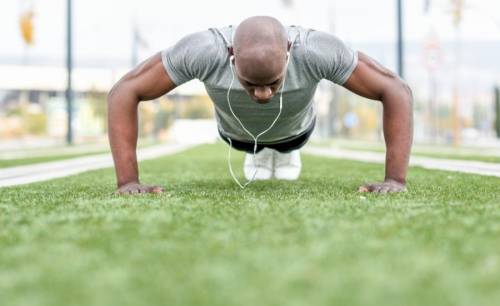
RHOMBOID STRETCH. HOLD STRETCH FOR 10 seconds. REPEAT ON OTHER ARM
RHOMBOID STRETCH. HOLD STRETCH FOR 10 seconds. REPEAT ON OTHER ARM
STRETCH OUT ON BOTH SIDES,
HOLD STRETCH FOR 10 secs for MAX BENEFIT
SUPERMAN EXERCISE TO STRENGTHEN THE BACK.
REPEAT 10x . For 2 SETS
PUSH UPS
KEEPING PROPER FORM, DO THIS 10x
41-60%: Severe Disability
Pain experienced with severe disability is so noticeable and distracting. It significantly interferes with your daily activities. As a result, you may find it difficult to concentrate on your work, take care of your personal needs or engage in recreational activities. This kind of pain needs professional attention. A thorough examination is essential to identify the cause of your pain. Furthermore, investigations such as X-ray or MRI may be required.
Nevertheless, the good news is, with effort, you can manage the pain and still work or participate in activities you love.
While you await your appointment, you can relieve your pain and improve your quality of life by gently engaging in these functional activities. The focus is to give you pain relief, help stabilize your back, improve your agility and stimulate your sensiro-neural system.
*Caution: Its normal to experience soreness or some pain a few hours after exercising or the next day. STOP if an exercise aggravates the pain immediately.
These exercises work for alleviating Low back pain causing moderate disability .













OUTSTRETCH ONE LEG
KEEP KNEE STRAIGHT
REACH FOR ANKLES
HOLD POSITION for 20 -30s
REPEAT ON BOTH LEGS 4X
-Sit up with one leg outstretched
-Keep knees straight
– Reach for your ankles slowly
-HOLD POSITION for 20 -30s
– Repeat on both legs 4x
-OUTSTRETCH ONE LEG
-KEEP KNEE STRAIGHT
-REACH FOR ANKLES
-HOLD POSITION for 20 -30s
-REPEAT ON BOTH LEGS 4X
–
HOLD POSITION for 10-20s
REPEAT 3X
LUMBAR EXTENSION
-Start from a resting position
(keep your hip region on the floor)
-Gently raise upper body up
– Until arms are fully extended
-HOLD THIS POSITION FOR 10-20S
-REPEAT 3 X
LUMBAR EXTENSION
HOLD POSTION FOR 15-30s
REPEAT 3X
-Start from a resting position
(keep your hips on the floor)
-Gently raise upper body
– Until arms are fully extended
-HOLD POSITION for 15-30s
-REPEAT 3 X
STRETCH YOUR BACK
HOLD POSITION for 10-20s
REPEAT 3X on both sides
-TO RELIEVE PAIN STRETCH THAT PIRIFORMIS
-HOLD POSITION for 10-20s
-REPEAT 3X on both sides
STRENGTHEN YOUR BACK
HOLD POSITION for 10-20s
REPEAT 3X on both sides
-Stretch that TIGHT PIRIFORMIS muscle pressing in the SCIATIC nerve
-Relieve the pain
-HOLD POSITION for 10-20s
-REPEAT 3X on both sides
Go for walks at least 30 mins, 3x a week
Keep ’em muscles warmed up
A good walk feels great !
Go for walks at least 30 mins, 3x a week
Keep ’em muscles warmed up
-STRENGTHEN YOUR QUAD MUSCLES
-RELIEVE BACK PAIN
-HOLD FOR 30s
STRENGTHEN YOUR CORE
RELIEVE BACK PAIN
HOLD FOR 30S
 Move right – Exercise at least 3x a week
Move right – Exercise at least 3x a week- Eat a balanced meal daily – rich in veggies and fruits.
- Hydrate– Drink at least 2L of water daily. Not more than 300 mls at a go.
- Sleep – 6- 8 hours daily. Avoid tummy sleeping.
- Do not sit for more than 30 minutes at a stretch.
These stretching exercises work well for upper back pain causing disability.




STRETCH AND HOLD FOR 10 secs.
REPEAT 5 x
STRETCH OUT YOUR ENTIRE BACK
GET YOUR EXERCISE BALL HERE
REACH FOR THE TOES.
STRETCH YOUR BACK.
REPEAT 10x
61-80%: Crippling Disability
This kind of pain dominates your senses. You are unable to perform your daily activities as it significantly limits you. Physical activity is greatly reduced. Sleep is interfered with and in most cases, comes with great difficulty. Your ability to freely participate in social activities is now sadly a thing of the past. Even conversation with family requires much effort.
CHIROPRACTIC CARE is well known and a safe option that helps with this disabling condition when surgery is not indicated. Being on chronic pain killers is NOT the answer.
These tips can help relieve the pain temporarily while you seek professional help – most preferably chiropractic.
*Caution: Its normal to experience soreness or some pain a few hours after exercising or the next day. STOP if an exercise aggravates the pain immediately.
The following are well known alternatives that help ease the pain and help in the early stages of exercising.

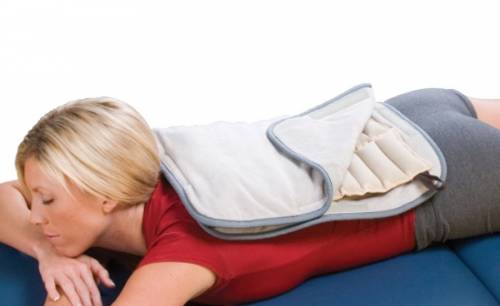
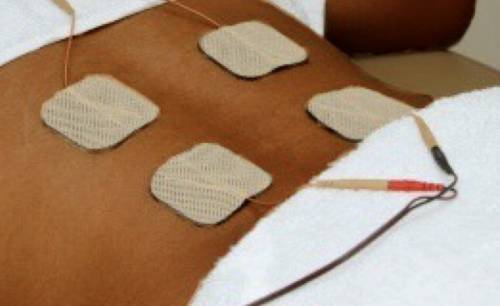

Transcutaneous Electical Nerve Stimulation ( TENS)
- Move right – Move more . Exercise at least 3x a week in bed/ in chair
- Eat a balanced meal daily – rich in veggies and fruits
- Hydrate– Drink at least 2L of water daily. Not more than 300 mls at a go.
- Sleep – 6- 8 hours daily. Avoid tummy sleeping.
- Do not sit for more than 30 – 60 minutes at a stretch. Movement is lotion to the spine.

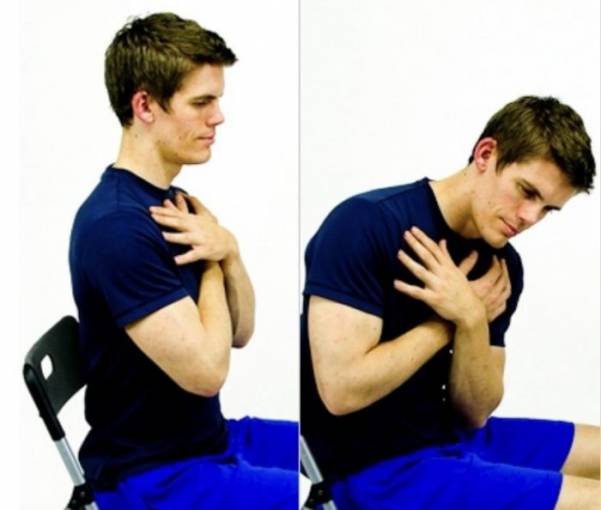

REACH FOR THE TOES.
STRETCH YOUR BACK.
REPEAT 10x
Hold and count to 20.
Repeat on the other arm
Hold and count to 20.
Repeat on the other arm
Hold and count to 20.
Repeat on the other arm
Hold and count to 20.
Repeat on the other arm
ABOVE 81%: Complete Disability
The most unbearable, unspeakable, excruciating pain ever. People in this category are mostly bedridden and unable to care for themselves. This pain is characterized by frequent crying and/or moaning in bed. A few people find themselves in this category.
YOU NEED HELP URGENTLY!
Pain killers are not always the answer. Let our team at Oak Wellness Hub be your helping hands through the healing touch of Chiropractic care. Spine care is our specialty; we’ve got your backs.



 Sit upright as often as you can
Sit upright as often as you can Move right – Exercise at least 3x a week
Move right – Exercise at least 3x a week
Such detailed information. Thank you
Is it expensive pls
No sir. It isn’t expensive. A full consultation with the doctor with an examination and 1st therapy is a discounted bundle priced at GHc 300.
These informations are really useful for back pain . Is lumbar support pillow is reliable ?
Good article! We will be linking to this particularly great content on our website. Keep up the great writing. Katuscha Early Sell
I think this is a real great blog post. Thanks Again. Fantastic. Emili Sterne Carlie
You completed various good points there. I did a search on the matter and found a good number of folks will have the same opinion with your blog. Hilda Bil Flip
Hello colleagues, fastidious article and fastidious urging commented here, I am really enjoying by these. Malinde Dimitry Morena
I like this internet site because so much useful material on here :D. Christian Cece Brandyn